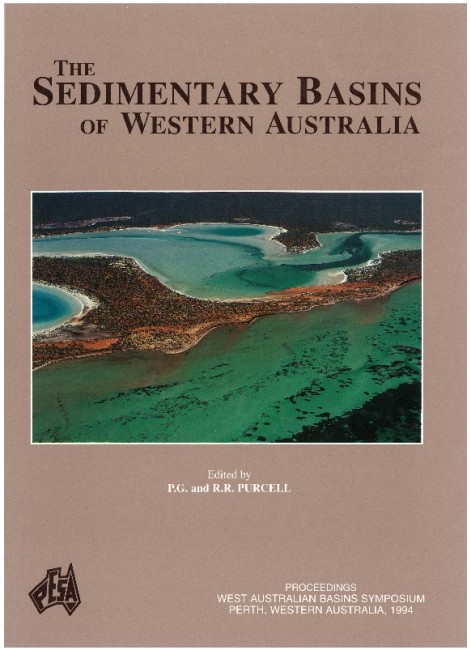Publication Name: The Sedimentary Basins of WA
Authors: J.E. Blevin, A.E. Stephenson and B.G. West
Publication Volume: 1
Date Published: July 1994
Number of Pages: 29
Reference Type: Book Section
Abstract:
The Beagle Sub-basin is a complex, Mesozoic wrench basin that is transitional between the outer offshore Canning Basin and the Barrow and Dampier sub-basins of the Carnarvon Basin. Regional mapping of seismic data undertaken by the Bureau of Resource Sciences (BRS) indicates that the basin is characterised by a series of north-trending, Triassic-Jurassic fault blocks that are separated by intervening structural lows. Movement in the period preceding breakup in the late Middle Jurassic was principally lateral and occurred along a series of sub-parallel, north-northeast-trending wrench zones in the eastern, southern and northwestern regions of the sub-basin. The Triassic-Jurassic fault blocks acted as stable structures while wrench movement was confined to the intervening structurally low areas. The regional distribution of wrench structures can be used to define the geologic boundaries of the Mesozoic Beagle Sub-basin.Regional mapping in combination with palaeogeographic reconstructions indicate that a Late Triassic structuring event preceded the late Middle Jurassic wrench movement. The structural nature of the event is unclear, however this period of basin development resulted in the 'first-stage' sub-division of the area into a series of topographic highs and lows. A sequence of Lower Jurassic claystones deposited in the Upper Triassic lows constitute the primary potential source interval for Beagle Sub-basin. The thin nature and immature to marginal maturity of Upper Jurassic claystones indicates that this interval is not likely to be a significant source rock in the sub-basin.


